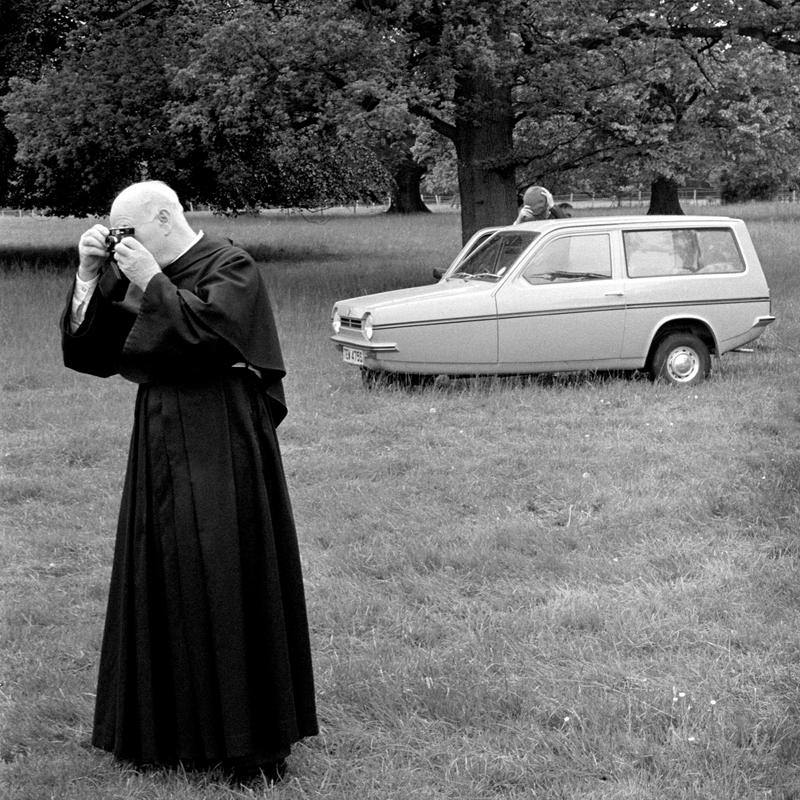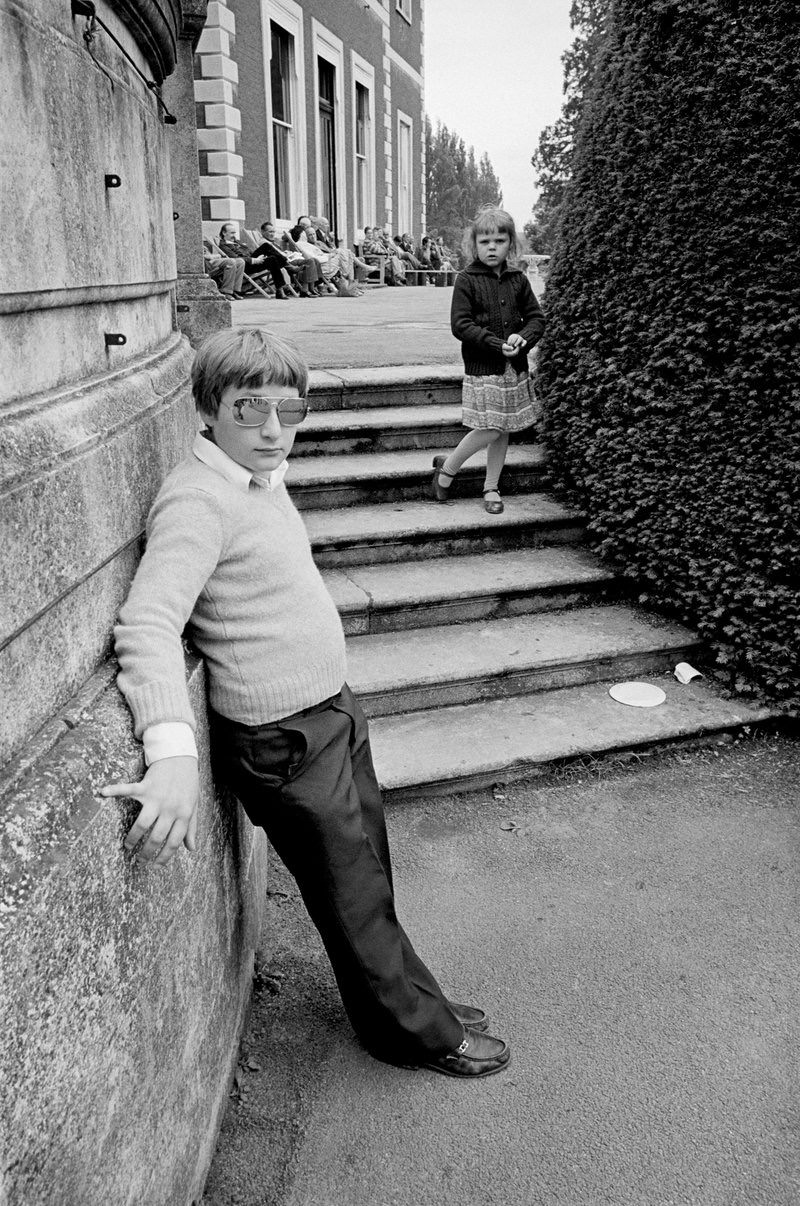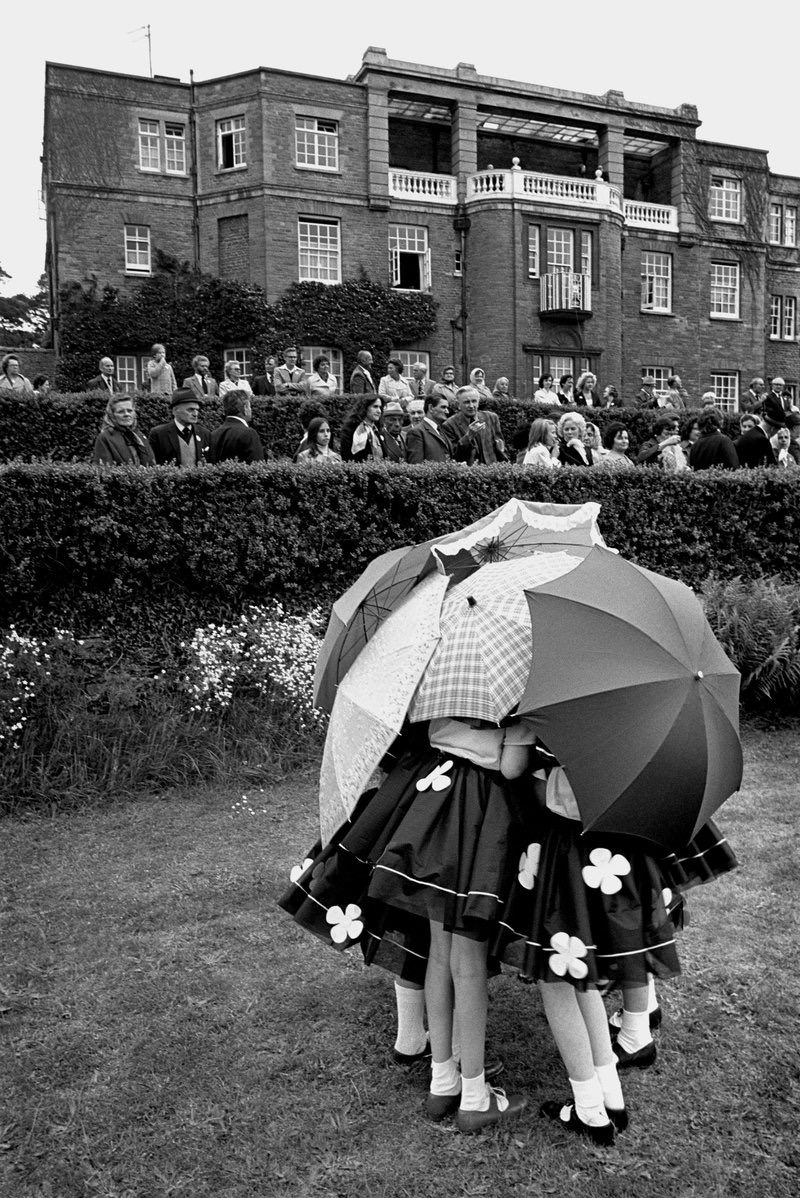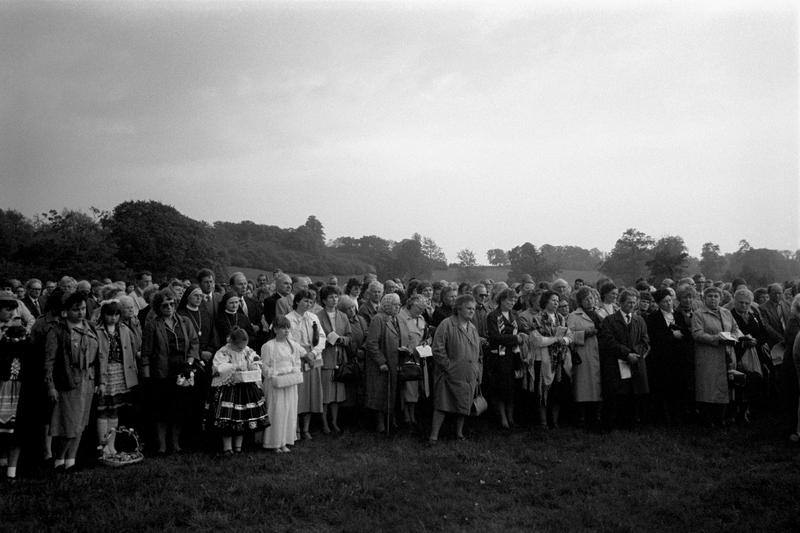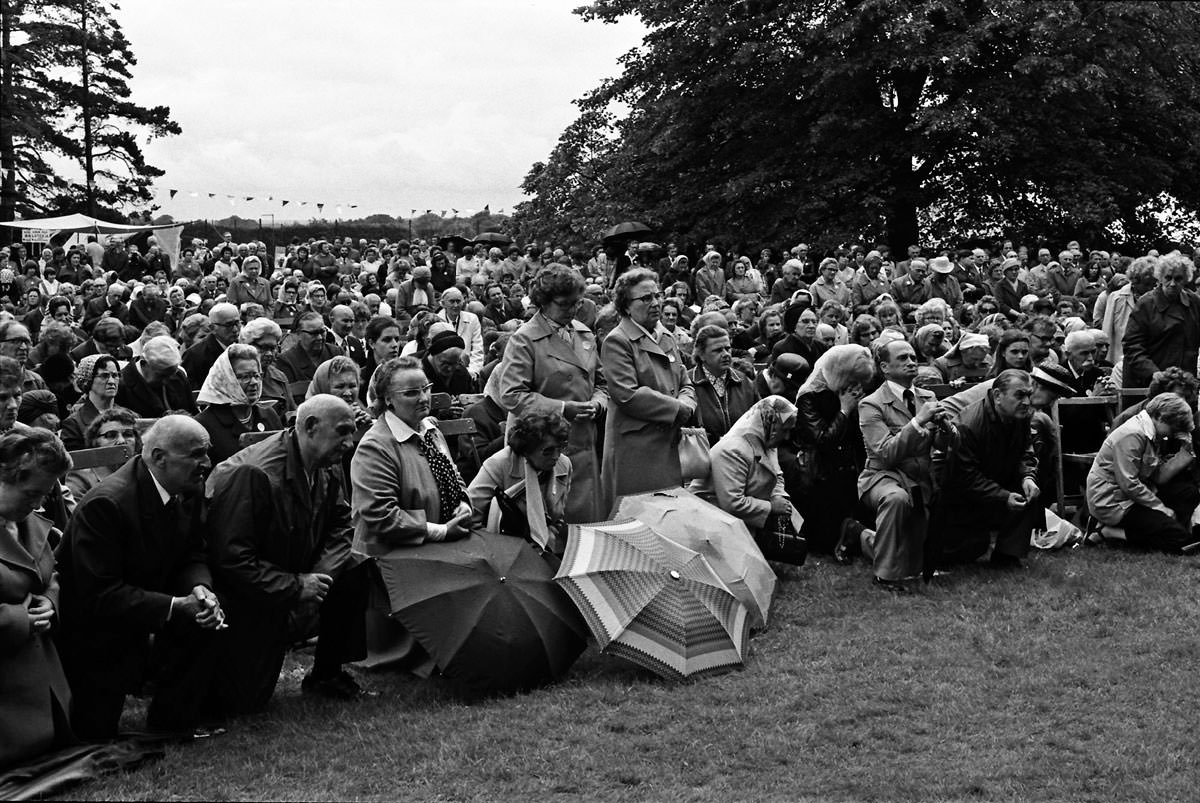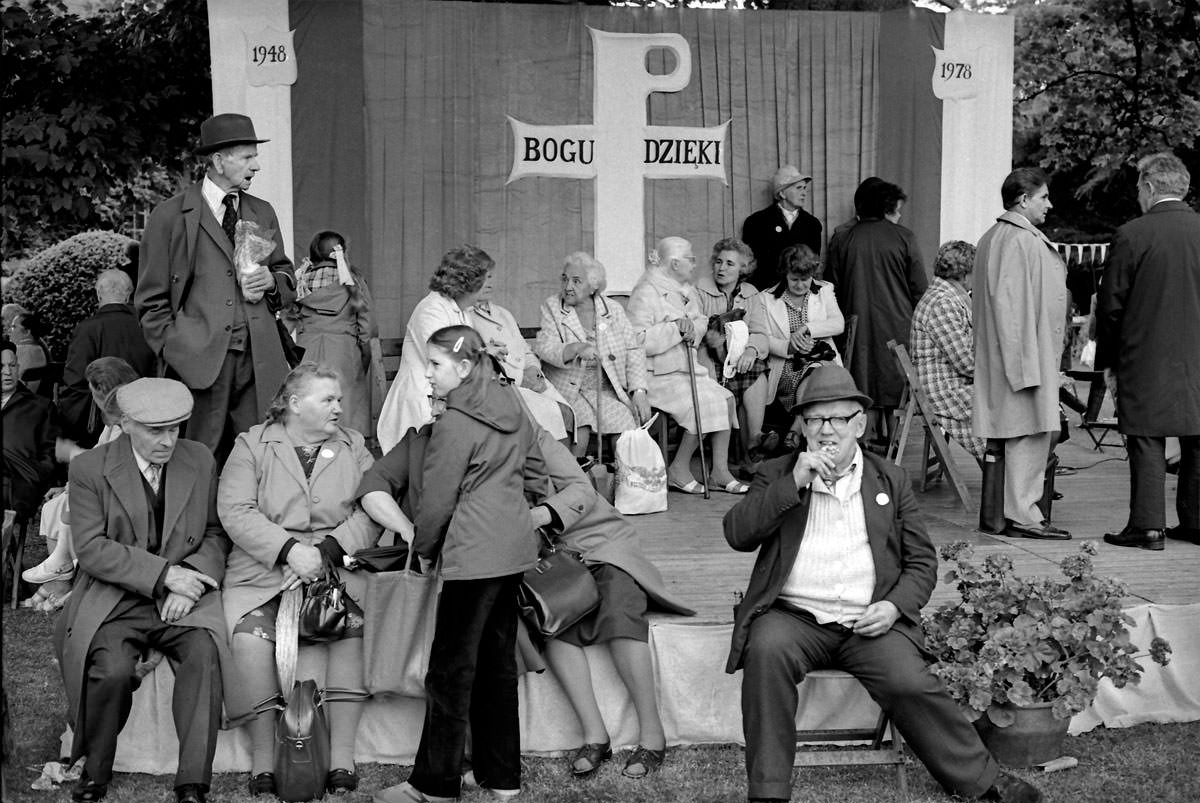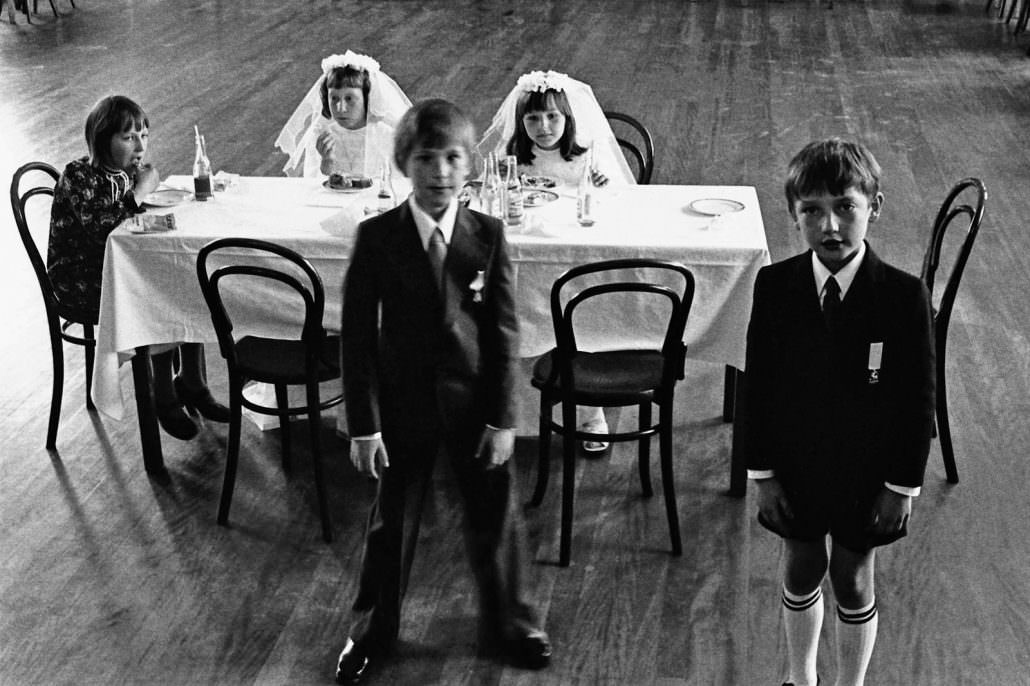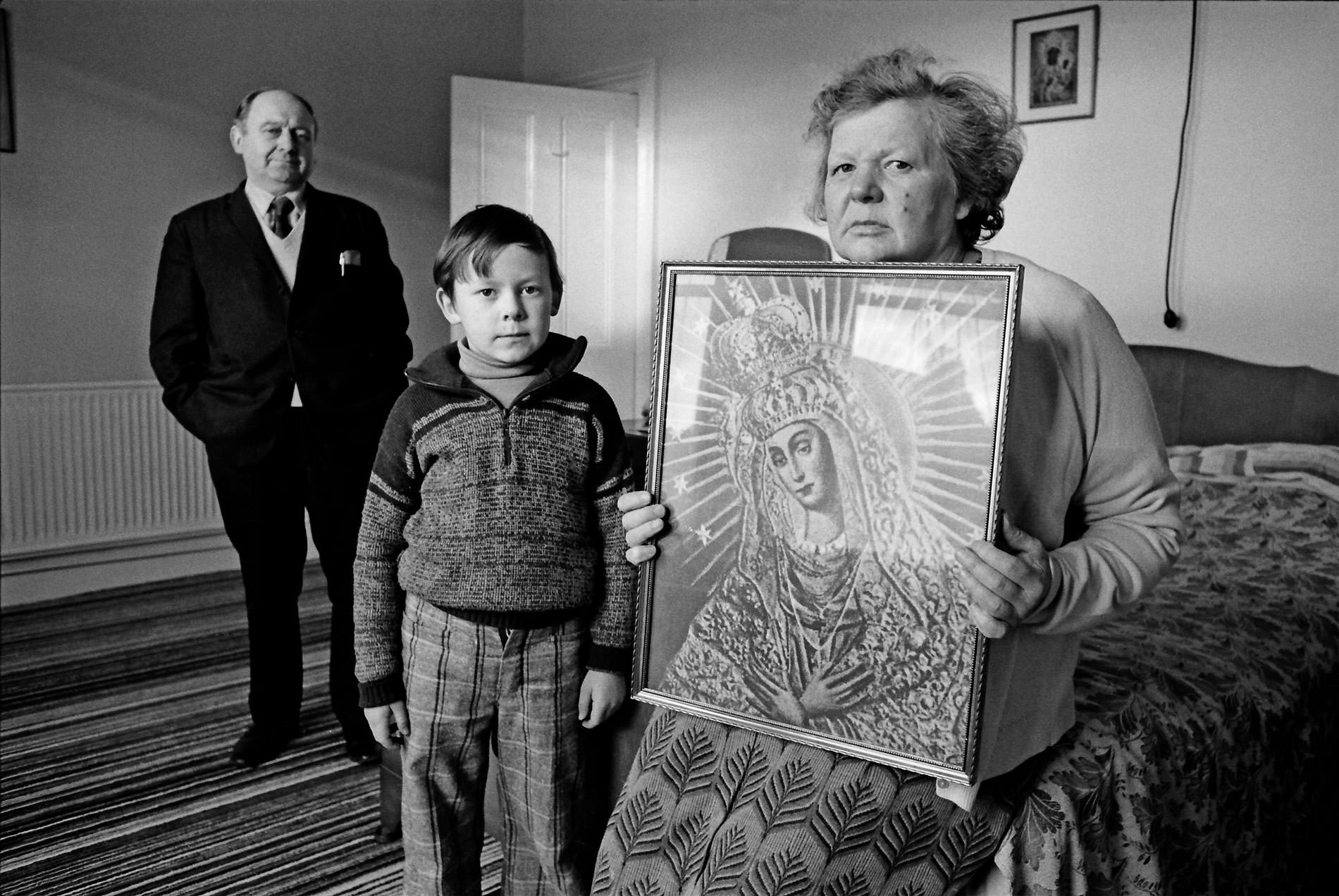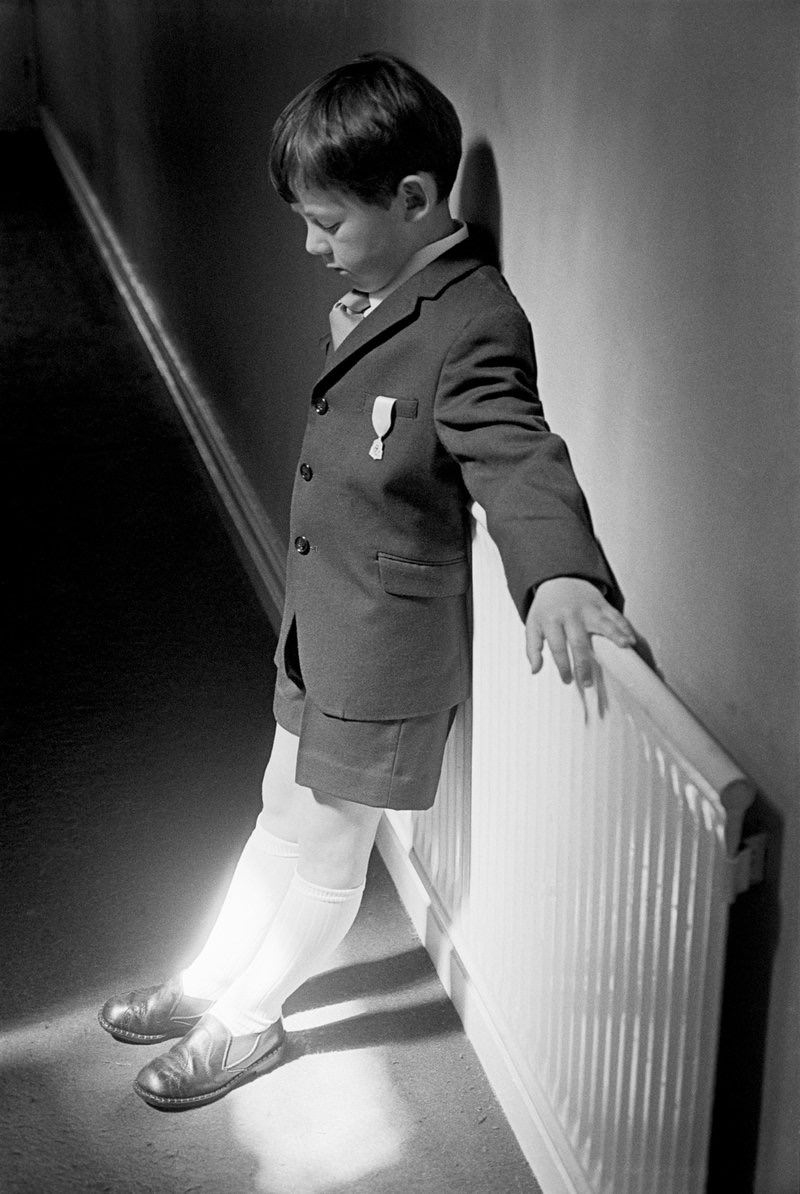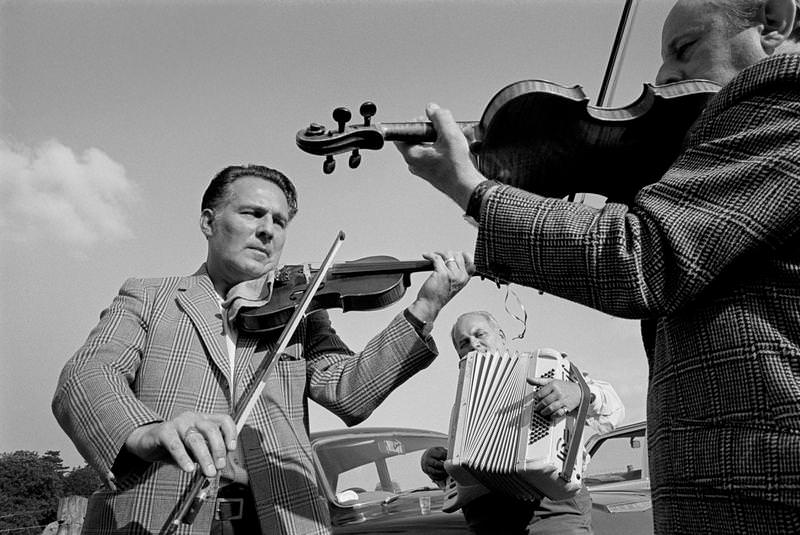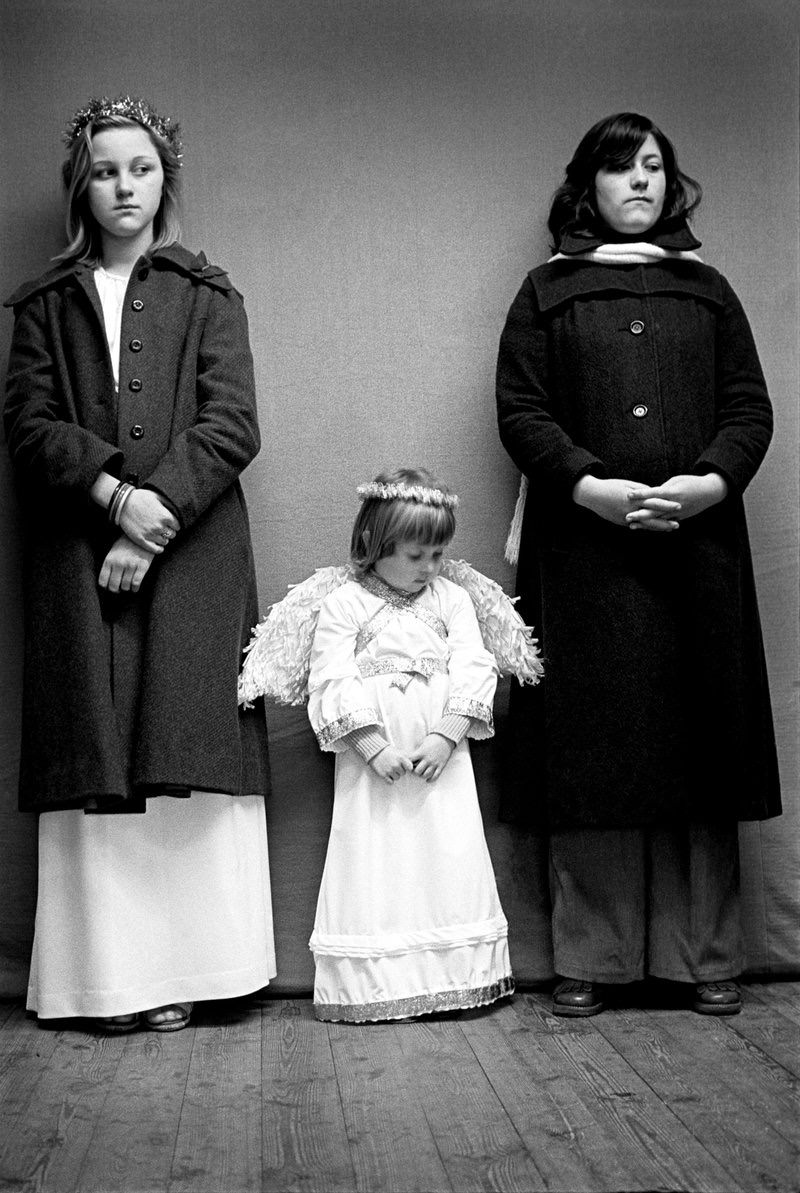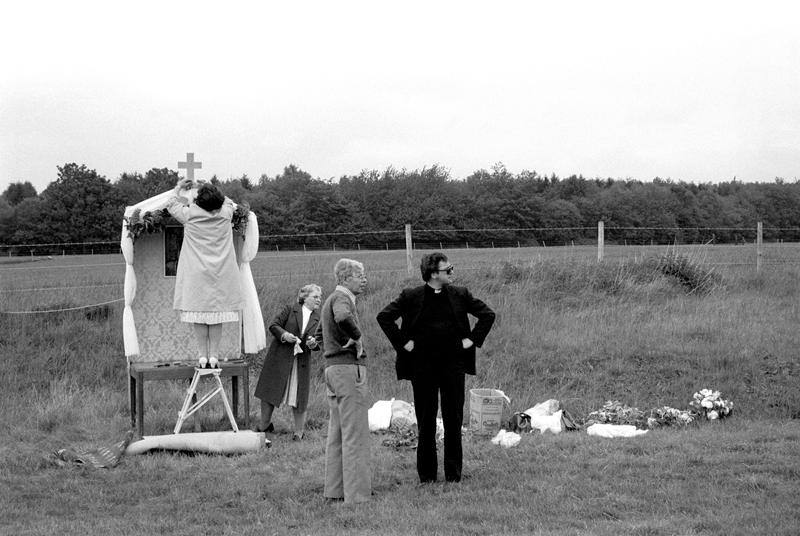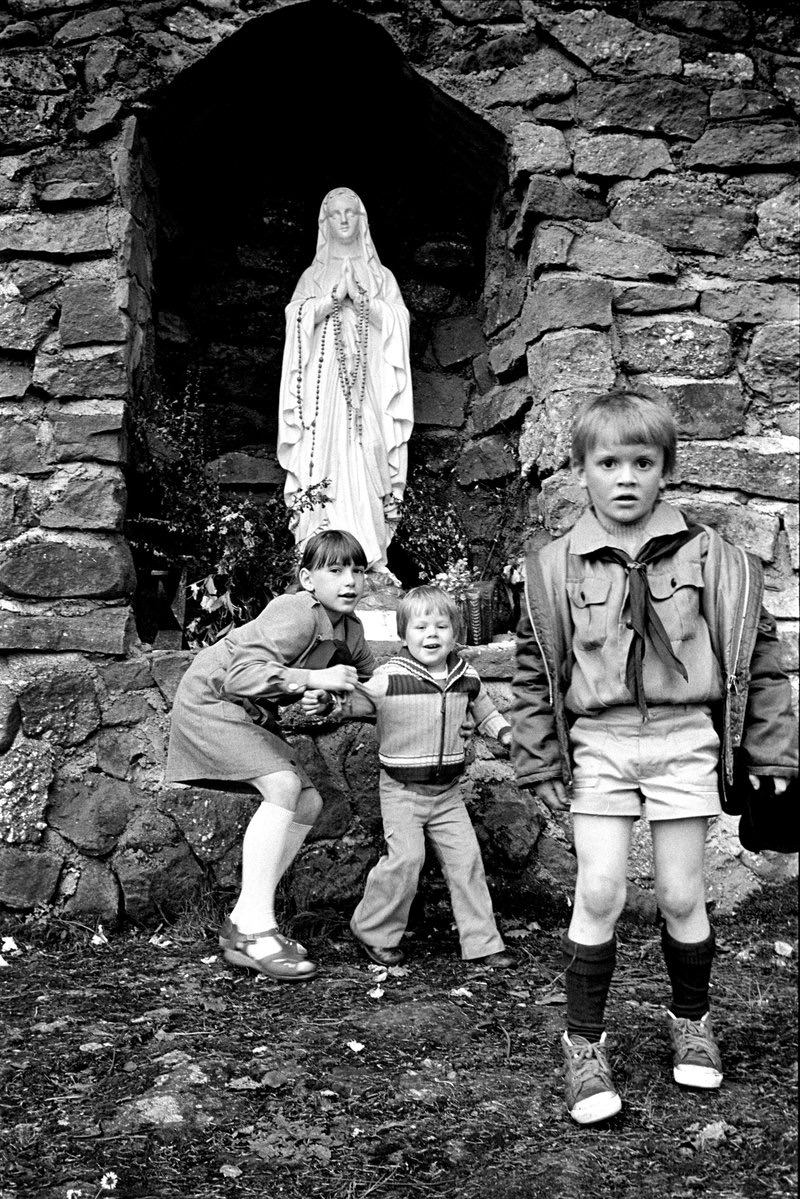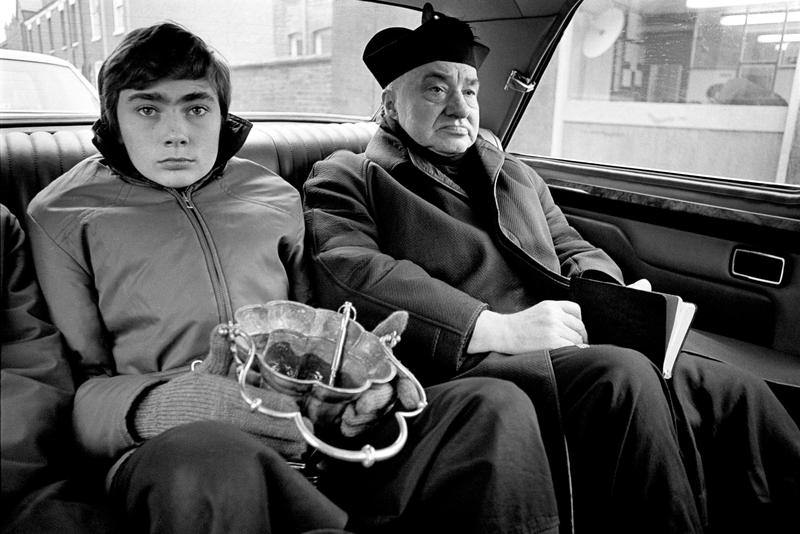Czesław Siegieda – Polska Britannica
Czesław Siegieda – Polska Britannica
Czesław Siegieda, born the son of Polish immigrants to England in Leicestershire in 1954, showed an interest in photography from an early age. From his teens he photographed the Polish community he grew up in, moving through fêtes and funerals with ease only available to an insider.
The images in the book, taken between 1974 and 1981, show the staunchly Catholic traditions and national customs so faithfully maintained by the community as they rebuilt their lives following the trauma suffered during and after the Second World War. Whilst many of Siegieda’s images display a sharp eye for the absurd and all are marked by a visible affection for his subjects, his photographs of his close family are notable for their intimacy.
His mother Helena, though physically robust, looks careworn and vulnerable, clutching a bucket of vegetable peelings or a picture of the Virgin Mary like a life raft whilst her husband (Czesław’s stepfather) hovers in the background, as if ready to lend a hand if needed but not wishing to intrude.
For many years the archive remained private, initially out of respect for the sensitivities of his parents’ generation: nervous of their position as ‘guests’ in a foreign land, they were determined not to draw attention to themselves. This initial impulse of discretion soon gave way to the more prosaic demands of life and work. For decades the negatives sat unheeded in a drawer until, in 2018, two years after his mother’s death, Siegieda decided that it was time to bring them out into the world.
The process of digitizing the archive went hand in hand with the creation of a website and the release of images on social media, posting photographs on Instagram in the expectation that they might be of niche interest to a small number of followers. The response was as overwhelming as it was unexpected; the photographs attracted the attention of many notable photographers, including Martin Parr, who encouraged Siegieda to publicize the work more widely.
The book contains over 90 images from this archive, with an essay by author and historian Jane Rogoyska as well as a foreword by Martin Parr. The book is available in an edition of 600, including 30 copies with a signed and limited pigment print.
Special thanks to the Polish Cultural Institute in London for their support in producing this title.
About the Author
Czesław Siegieda (b.1954) was born in a displaced persons camp at Burton on the Wolds in Leicestershire. Polish is his first language, not starting to learn English until he went to a Catholic school run by nuns when he was five years old. His upbringing was steeped in the Polish traditions of his parents. A photographer from a young age, he went on to study photography at the acclaimed Trent Polytechnic School of Creative Photography in Nottingham (1973 – 1977): lecturers included Paul Hill, Raymond Moore, and John Blakemore, plus visiting lecturers Brett Weston, David Hurn, Nick Hedges, Chris Steele-Perkins, Martin Parr, Danny Lyon, Minor White, Van Deren Coke, and Tim Gidal.
Beginning with intimate views of his family members, he photographed the life and times of a community displaced by war and unable to return to their homeland. His subjects include daily life at home, religious festivals, Polish Saturday school, the Polish boarding schools, remembrance, and commemoration. From 1970 until the eighties, he photographed members of the Polish community-based in the East Midlands, treating them as protagonists of a small ‘theatrical world’ in search of a lost spiritual homeland.
Many of his subjects had suffered traumatic events but, as an insider he has a unique natural affinity with his subjects, understanding their sensitivities and respecting their dignity. His black and white photographs reveal a world that has all but disappeared.
At this distance in time, it is important that the contribution of the Poles to our victory in World War II and their lives in this country after the end of hostilities should be remembered and celebrated. Czesław Siegieda’s work reflects his concern that this should be so.

